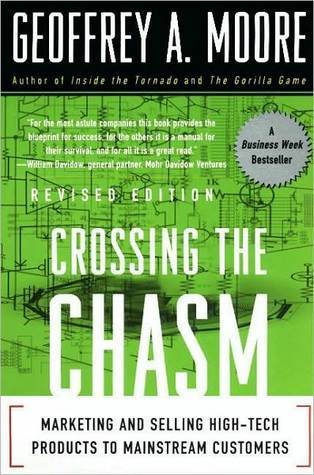More on this book
Community
Kindle Notes & Highlights
In academic terms, such change-sensitive products are called discontinuous innovations. The contrasting term, continuous innovations, refers to the normal upgrading of products that does not require us to change behavior.
technology is a central interest in their life, regardless of what function it is performing.
people who find it easy to imagine, understand, and appreciate the benefits of a new technology,
They want to see well-established references before investing substantially. Because there are so many people in this segment—roughly one-third of the whole adoption life cycle-winning their business
As a result, they wait until something has become an established standard, and even then they want to see lots of support and tend to buy, therefore, from large, well-established companies.
their industry, the early adopters expect to get a jump on the competition, whether from lower product costs, faster time to market, more complete customer service, or some other comparable business advantage.
radical discontinuity between the old ways and the new,
also are prepared to bear with the inevitable bugs and glitches that accompany any innovation
buy a productivity improvement for existing operations.
They are looking to minimize the discontinuity with the old ways.
evolution, not re...
This highlight has been truncated due to consecutive passage length restrictions.
They want technology to enhance, not overthrow, the established wa...
This highlight has been truncated due to consecutive passage length restrictions.
They will forgive ghastly documentation, horrendously slow performance, ludicrous omissions in functionality, and bizarrely obtuse methods of invoking some needed function—all in the name of moving technology forward. They make great critics because they truly care.
(1) have the latest and greatest technology, and (2) don’t need to make much money.
insight to match an emerging technology to a strategic opportunity, the temperament to translate that insight into a high-visibility, high-risk project, and the charisma to get the rest of their organization to buy into that project.
Visionaries are not looking for an improvement; they are looking for a fundamental breakthrough.
in contrast with the technology enthusiast, a visionary derives value not from a system’s technology itself but from the strategic leap forward it enables.
they can usually provide up-front money to seed additional development that supports their project—hence their importance as a source of high-tech development capital.
visionaries are easy to sell but very hard to please.
The winning strategy is built around the entrepreneur being able to “productize” the deliverables from each phase of the visionary project.
is accomplishable by mere mortals working in earth time 2. provides the vendor with a marketable product 3. provides the customer with a concrete return on investment that can be celebrated as a major step forward.
a highly demanding customer who will seek to influence your company’s priorities directly and a high-risk project that could end in disappointment for all.
It then invites the visionary executives to check with the technology enthusiast of their choice to verify that the vision is indeed achievable.
The company simply has no expertise in bringing a product to market.
The company sells the visionary before it has the product. This is a version of the famous vaporware problem,
failing to discover, or at least failing to articulate, the compelling application that provides the order-of-magnitude leap in benefits.
who do not want to be pioneers
never volunteer to be an early test site
“leading edge” of technology is all too often the...
This highlight has been truncated due to consecutive passage length restrictions.
the goal of visionaries is to take a quantum leap forward, the goal of pragmatists is to make a percentage improvement—incremental, measurable, predictable progress.
they care about the company they are buying from, the quality of the product they are buying, the infrastructure of supporting products and system interfaces, and the reliability of the service they are going to get.
be “vertically” oriented,
they like to see competition—in part to get costs down, in part to have the security of more than one alternative


